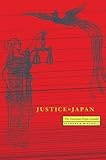Justice in Japan : The Notorious Teijin Scandal / Richard H. Mitchell.
Material type: TextPublisher: Honolulu : University of Hawaii Press, [2002]Copyright date: ©2002Description: 1 online resource (280 p.)Content type:
TextPublisher: Honolulu : University of Hawaii Press, [2002]Copyright date: ©2002Description: 1 online resource (280 p.)Content type: - 9780824825232
- 9780824863203
- 345.52/02323 21
- KNX42.T45 M58 2002eb
- online - DeGruyter
- Issued also in print.
| Item type | Current library | Call number | URL | Status | Notes | Barcode | |
|---|---|---|---|---|---|---|---|
 eBook
eBook
|
Biblioteca "Angelicum" Pont. Univ. S.Tommaso d'Aquino Nuvola online | online - DeGruyter (Browse shelf(Opens below)) | Online access | Not for loan (Accesso limitato) | Accesso per gli utenti autorizzati / Access for authorized users | (dgr)9780824863203 |
Browsing Biblioteca "Angelicum" Pont. Univ. S.Tommaso d'Aquino shelves, Shelving location: Nuvola online Close shelf browser (Hides shelf browser)

|

|

|

|

|

|

|
||
| online - DeGruyter Jean-Marie Tjibaou, Kanak Witness to the World : An Intellectual Biography / | online - DeGruyter John A. Burns : The Man and His Times / | online - DeGruyter Justice and Democracy : Cross-Cultural Perspectives / | online - DeGruyter Justice in Japan : The Notorious Teijin Scandal / | online - DeGruyter Kabuki's Forgotten War : 1931-1945 / | online - DeGruyter Kaempfer's Japan : Tokugawa Culture Observed / | online - DeGruyter Khmer Women on the Move : Exploring Work and Life in Urban Cambodia / |
Frontmatter -- Contents -- Acknowledgments -- Teijin Trial Defendants -- A Note on the Transliteration of Japanese Words -- Introduction -- Chapter 1. Criminal Justice System -- Chapter 2. Background of the Scandal -- Chapter 3. Saitò Cabinet -- Chapter 4. Preparation for the Trial -- Chapter 5. Trial -- Chapter 6. Aftermath -- Chapter 7 .Postwar -- Chapter 8 .Conclusion -- Notes -- Bibliography -- Index
restricted access online access with authorization star
http://purl.org/coar/access_right/c_16ec
The Imperial Rayon Company corruption scandal (popularly known as the Teijin incident) was Japan's major interwar political bribery case. Compared to numerous Japanese corruption cases of the past century, the Teijin affair stands out as not only the most sensational of the pre-1945 era, but also the most important--perhaps because more than any other case, it has left an indelible mark on the public mind. Nevertheless, Japanese and foreign scholars have neglected this incident, which brought down an entire cabinet and produced a record-setting trial. The sixteen defendants, all prominent bureaucrats, ministers, and businessmen, were charged with illegally profiting from the sale of Imperial Rayon Company stock held by the Bank of Japan. In December 1937, after a more than two-year trial, all sixteen were found innocent when the judges declared that the case had been fabricated by the prosecution. Their verdict ranks in importance with the famous Otsu case judgment, the benchmark for judicial independence from the executive. Despite its importance, basic facts about the Teijin case remain obscure, as scholars repeat factual misinformation and produce farfetched conspiracy theories. This study, the first comprehensive, scholarly work on the subject in English or Japanese, investigates controversial and important issues regarding the origins, results, and significance of the incident. It illustrates transwar continuities within the judicial system by showing that the institutional flaws in the old criminal justice system, which were magnified by the Teijin investigation and trial, remain embedded despite reform attempts during the Occupation. While illuminating the basic institutional features that generated it, the author uses the incident to spotlight the considerable amount of political criticism and public conflict that existed in Japan in the 1930s.
Issued also in print.
Mode of access: Internet via World Wide Web.
In English.
Description based on online resource; title from PDF title page (publisher's Web site, viewed 02. Mrz 2022)


